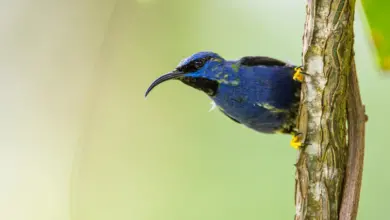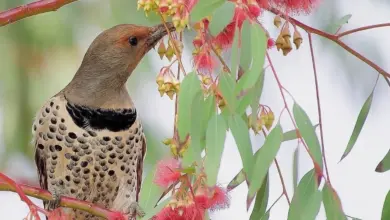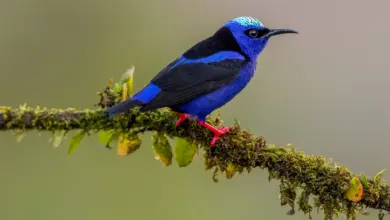Black or American Scoter
The Black or American Scoter (Melanitta americana) is a large sea duck, 43-49 cm in length.
Together with the Common Scoter M. nigra, it forms the subgenus Oidemia; the two are sometimes considered conspecific (of, or belonging to, the same species), the Black Scoter then being referred to as M. nigra americana. Its French name, used in parts of its Canadian range, is macreuse noire (also meaning “black scoter”).
Distribution / Range
The Black Scoter breeds in the far north of North America in Labrador and Newfoundland to the southeast Hudson Bay, in Alaska. It also occurs on the Siberian side of the Bering Straits east of the Yana River. It winters further south in temperate zones, on the coasts of the northern USA and Canada, on the Pacific coast south to the San Francisco Bay region and on the Atlantic and Gulf of Mexico coasts, and in Asia as far south as China.
Some birds may over-winter on the Great Lakes. This species is a very rare vagrant to western Europe; only drakes are safely identifiable out of range, so females are likely to be undetected.
It forms large flocks on suitable coastal waters in winter quarters. These are tightly packed, and the birds tend to take off together; in the breeding season they are less social. It has been suggested that in coastal waters this species prefers sheltered embayments, and possibly waters that include some mixed depths.
Breeding / Nesting:
The lined nest is built on the ground close to the sea, lakes or rivers, in woodland or tundra. 5-7 eggs are laid. Each eggs weighs from 60-74 grams (2-2.6 oz), or 8% of the females body weight. The incubation period may range from 27 to 31 days. Females brood their young extensively for about 3 weeks, after which the still flightless young must fend for themselves.
Description:
The adult female averages about 980 grams (2.1 lbs.) and 45 cm (18 inches) in length, while the adult male is on average 1100 grams (2.4 lbs.) and 49 cm (19 inches) in length.
It is characterised by its bulky shape and large bill. This is America’s only black duck, although the female may have some yellow around the nostils.
The male is all black with a very bulbous bill which is mostly yellow.
The female is a brown bird with pale cheeks, very similar to female Common Scoter.
When this bird is in flight, there is a silvery appearance from the underside.
This species can be distinguished from other scoters, apart from Common Scoter, by the lack of white anywhere on the drake, and the more extensive pale areas on the female.
Calls / Vocalizations:
Black Scoter and Common Scoter have diagnosably distinct vocalisations (Sangster 2009).
Diet:
This species dives for crustaceans and mollusks while migrating or wintering on the sea-coasts, and feeds on insects and their larvae, especially caddisflies, fish eggs and, more rarely, vegetation such as duck weed while nesting on freshwater.
Feeding Ducks …
We all enjoy these beautiful birds and many of us offer them food to encourage them to come over and stay around – and it works! Who doesn’t like an easy meal!
However, the foods that we traditionally feed them at local ponds are utterly unsuitable for them and are likely to cause health problems down the road. Also, there may be local laws against feeding this species of bird – so it’s best to check on that rather than facing consequences at a later stage.
- Foods that can be fed to Ducks, Geese and Swans to survive cold winters and remain healthy when food is scarce in their environment.
Please note that feeding ducks and geese makes them dependent on humans for food, which can result in starvation and possibly death when those feedings stop. If you decide to feed them, please limit the quantity to make sure that they maintain their natural ability to forage for food themselves – providing, of course, that natural food sources are available.




